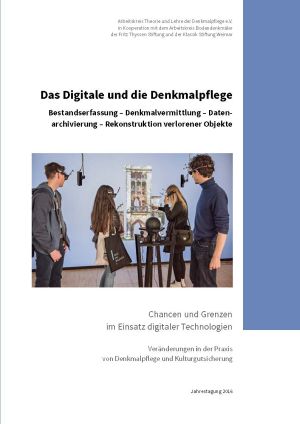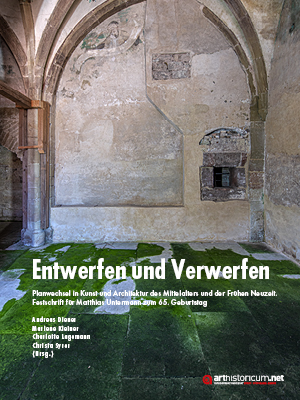Nussbaum, Norbert
Das Digitale und die Denkmalpflege: Bestandserfassung – Denkmalvermittlung – Datenarchivierung – Rekonstruktion verlorener Objekte
The ‘digital revolution’ is now in full swing. For heritage conservation, digital tools have opened new perspectives, finding application in the interactive visualization of past situations, the monitoring of threatened sites and artefacts, or the complex cross-referencing of heterogeneous collections of knowledge. At the same time, the limits and unsolved problems associated with using digital technologies are also becoming more apparent, for example with regard to maintaining the rapidly-growing volumes of data being generated.
And yet with digitization, we are not dealing primarily with a ‘technical’ innovation. Thus the effort to conserve digital heritage, including documenting, researching and publishing cultural assets, will transform more than just the institution of the museum. The new abundance of digitally-generated images can also be seen to be changing the standards of the scientific and academic discipline. A further and as yet underappreciated aspect of the digital revolution is the way it is rearranging the foci of attention in the knowledge ‘market’.
Perhaps the most noticeable consequence of digitization’s promise of exact and comprehensive reproduction is the knee-jerk insistence, following every instance of the spectacular destruction of a famous monument, on creating a reconstruction. Here it is clear that an affinity for reconstruction is inherent in the digital, to the extent that its primary feature is its capacity to translate all information into binary code, to capture and copy exactly, supposedly without loss of detail. In the digital age, the distinction between original and copy will therefore lose relevance – at the cost of a total manipulability of data, and of reality.
Entwerfen und Verwerfen: Planwechsel in Kunst und Architektur des Mittelalters und der Frühen Neuzeit. Festschrift für Matthias Untermann zum 65. Geburtstag
With his multifaceted work as an art historian, medieval and building archaeologist, Matthias Untermann has made a particular contribution to the study of medieval architecture and its semantics. Not only the objects of his research are frequently characterized by changes of plans, but also his own career: In 2000, Matthias Untermann became a professor of art history at Heidelberg University after having worked as a monument conservator for 15 years. For his 65th birthday, friends, colleagues and companions honour him with this collection of 55 essays, which reflect this change of plans by means of interdisciplinary collaboration.








